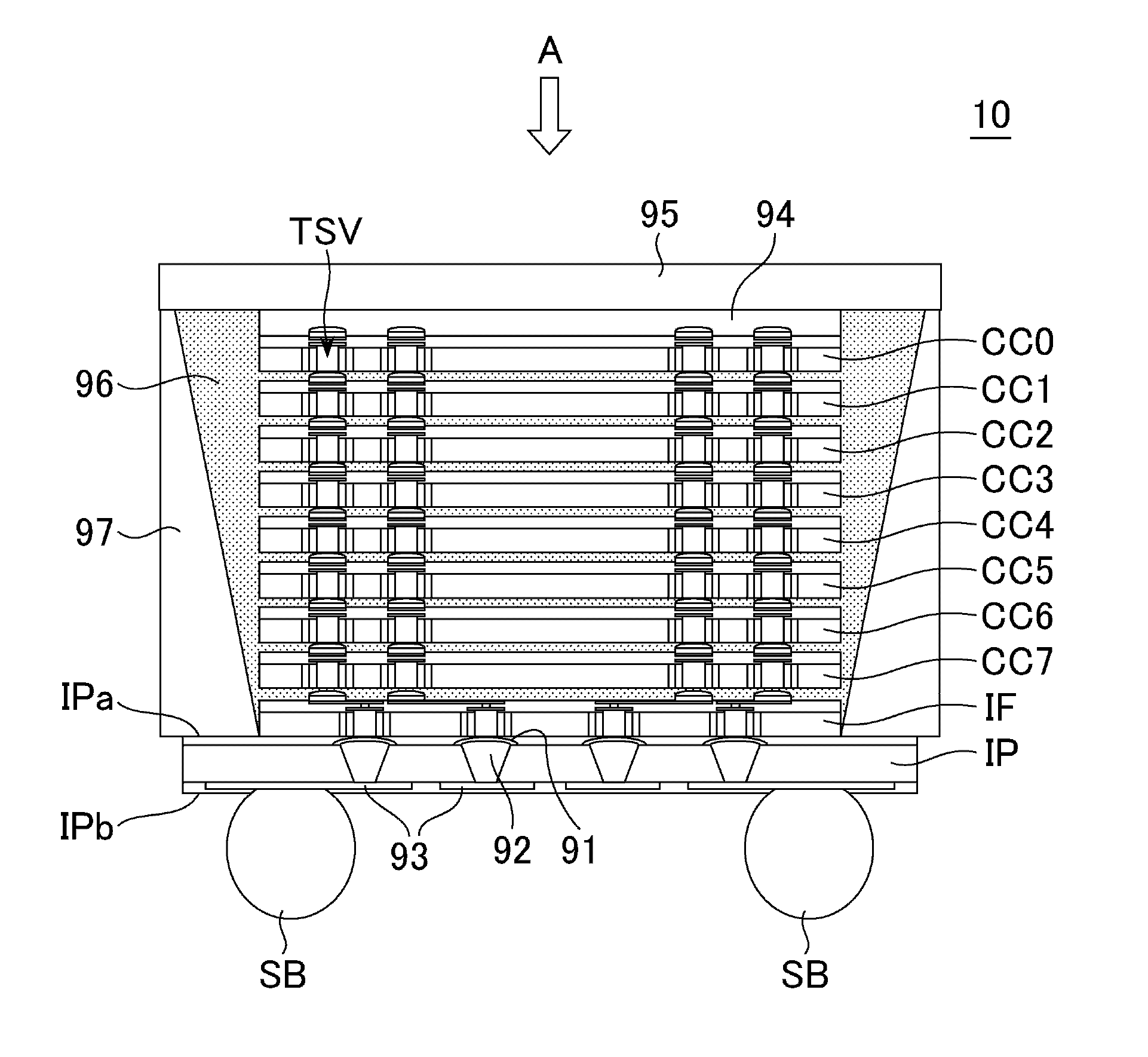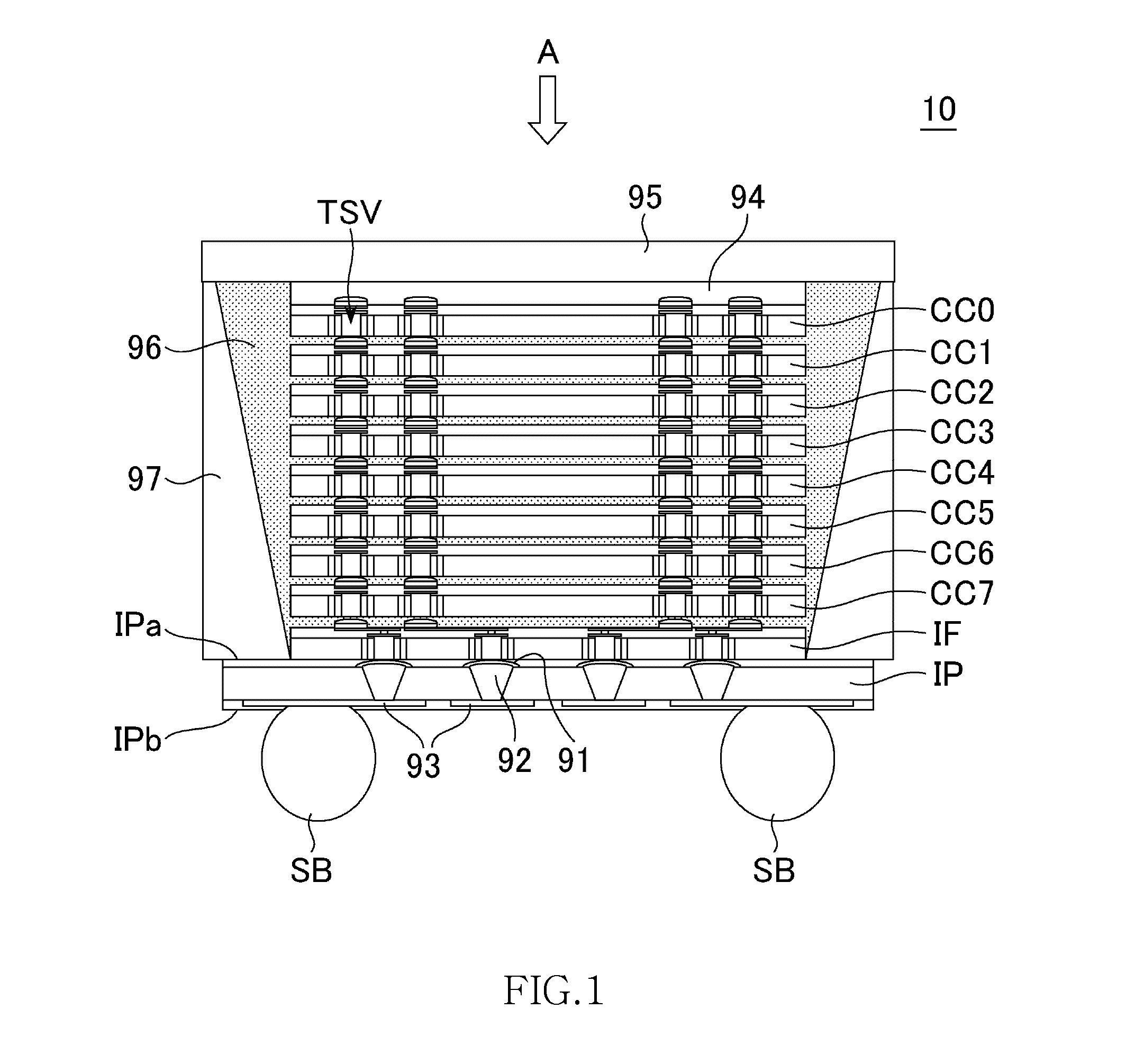Semiconductor device
a semiconductor and device technology, applied in the field of semiconductor devices, can solve the problems of increasing the chip area of a memory chip, difficult to dramatically increase the storage capacity per chip (or per memory chip), and difficult to speed up the transistor of the front-end portion
- Summary
- Abstract
- Description
- Claims
- Application Information
AI Technical Summary
Benefits of technology
Problems solved by technology
Method used
Image
Examples
Embodiment Construction
[0034]Preferred embodiments of the present invention will be explained below in detail with reference to the accompanying drawings.
[0035]FIG. 1 is a schematic cross-sectional view provided to explain the structure of a semiconductor device 10 according to the preferred embodiment of the present invention.
[0036]As shown in FIG. 1, the semiconductor device 10 according to this embodiment has the structure where 8 core chips CC0 to CC7 that have the same function and structure and are manufactured using the same manufacture mask, an interface chip IF that is manufactured using a manufacture mask different from that of the core chips CC0 to CC7 and an interposer IP are laminated. The core chips CC0 to CC7 and the interface chip IF are semiconductor chips using a silicon substrate and are electrically connected to adjacent chips in a vertical direction through plural Through Silicon Vias (TSV) penetrating the silicon substrate. The through silicon via may be referred to as a penetration ...
PUM
 Login to View More
Login to View More Abstract
Description
Claims
Application Information
 Login to View More
Login to View More - R&D
- Intellectual Property
- Life Sciences
- Materials
- Tech Scout
- Unparalleled Data Quality
- Higher Quality Content
- 60% Fewer Hallucinations
Browse by: Latest US Patents, China's latest patents, Technical Efficacy Thesaurus, Application Domain, Technology Topic, Popular Technical Reports.
© 2025 PatSnap. All rights reserved.Legal|Privacy policy|Modern Slavery Act Transparency Statement|Sitemap|About US| Contact US: help@patsnap.com



